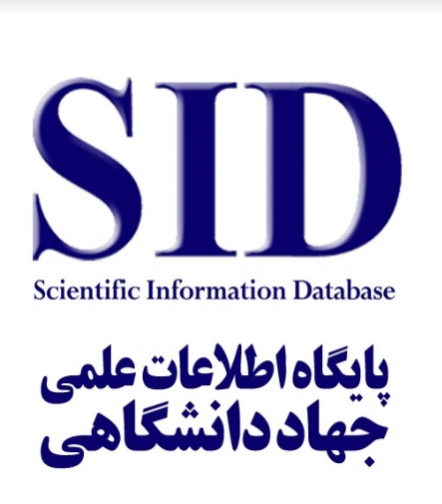بررسی عوامل واسطهای در مسیر اثرگذاری ناترازی بانکها بر بنگاههای اقتصادی
کلمات کلیدی:
ناترازی بانک, عوامل واسطه ای, بنگاه اقتصادیچکیده
ناترازی بانکها بهعنوان یکی از مشکلات ساختاری در سیستم بانکی، میتواند تأثیرات عمیق و گستردهای بر بنگاههای اقتصادی و بهتبع آن رشد اقتصادی کشور داشته باشد. ناترازی به معنای عدم تعادل میان داراییها و بدهیهای بانکهاست و میتواند به طور مستقیم و غیرمستقیم بر عملکرد نهادهای متأثر از نظام بانکی و یا وابسته به این نظام تأثیرگذار باشد. این مقاله با روش اسنادی تحلیلی به شناخت مکانیسمهای اثرگذاری ناترازی بانکها بر بنگاههای اقتصادی میپردازد. اهمیت موضوع آنجاست که سیاستگذاران اقتصادی باید برای بهبود عملکرد اقتصادی بنگاهها به متغیرهایی توجه ویژه نموده که تأثیرات منفی ناترازی بانکها را بر بنگاههای اقتصادی کاهش دهند. چراکه از طرفی به دلیل مسائلی همچون ضعفهای نظارتی داخلی و خارجی، که بیشتر شامل ضعفهای حسابرسی و نظارت بانک مرکزی است و به دلیل عدم شفافیت کافی، بانکها قادر به پنهانکردن ناترازی خود از طریق ایجاد داراییهای موهومی هستند و از طرف دیگر ناترازیهای بانکی میتوانند زنجیرهای از اثرات منفی را در کل سیستم اقتصادی به همراه داشته باشند و لذا هر گونه اختلال در عملکرد بانکها، میتواند به شدت بر تصمیمات سرمایهگذاری و رشد بنگاهها تأثیر بگذارد. برمبنای یافتههای تحقیق اثرات مستقیم ناترازی بانکها بر عملکرد بنگاههای اقتصادی عبارتاند از: افزایش هزینههای تأمین مالی، کاهش دسترسی به اعتبار، کاهش ظرفیت تولید، اثر بر اشتغال، کاهش رقابتپذیری، اثر بر قیمتگذاری و حاشیه سود، اثر بر نوآوری و تحقیقوتوسعه؛ و اثرات غیرمستقیم ناترازی بانکها بر بنگاههای اقتصادی نیز عبارتاند از: ریسکهای سیستماتیک، افزایش بیکاری، تأثیر بر زنجیره تأمین، کاهش سرمایهگذاری عمومی و خصوصی، افزایش ریسکهای اقتصادی، تأثیر بر روابط بینالملل، تأثیر بر ثبات اجتماعی، تأثیر بر نوآوری و توسعه.
دانلودها
مراجع
Abdollahipour, M., & Bet Shekan, M. (2020). Strategies for financial restructuring of banks in Iran. Asset Management and Financing, 8(4), 1–20.
Aghaeezadeh, M., & Rezaqoli, M. (2016). An examination of factors affecting the volume of overdue and matured receivables of selected branches of Sepah Bank. Islamic Finance and Banking Studies, 3(2), 95–111.
Arshadi, V., & Nadimi Kakhaki, M. (2024). The relationship of bank ownership of enterprises with the inflation rate and its implications for changes in bank deposit rates. Conference on Islamic Economics Facing the Fundamental Challenges of Iran’s Economy.
Brzoza-Brzezina, M., & Makarski, K. (2010). Credit crunch in a small open economy. SSRN Electronic Journal, 179(1), 14.
Central Bank of the Islamic Republic of Iran. (2022). Selected economic statistics: Monetary and banking sector.
Chenaran, H., Yavari, K., Heidari, H., & Sharifzadeh, M. J. (2023). Analysis and evaluation of banking imbalance in Iran and its effect on economic growth using a DSGE model: Counteracting policies.
Doroudian, H. (2018). Economic policy research: Banking imbalance—What happened and what should be done. Hekmataneh, 19(3), 41–45.
Doroudian, H. (2018). Opportunities and threats in the banking system (Part II). Hekmataneh, 17(3), 15–21.
Doroudian, H., & Seyed Mahdi, H. D. (2020). Hidden imbalance in the Iranian banking network (2014–2017): Analysis of nature and roots. Research Center of the Islamic Consultative Assembly.
Doulou, M., Qaleri, H., & Safari, A. (2017). Off-balance sheet items and the performance of commercial banks. Financial Management Strategy, 17(5), 135–158.
Eyvzloo, R., & Rameshg, M. (2019). Measuring systemic risk using expected shortfall and conditional value at risk and ranking banks.
Flanagan, T., & Purnanandam, A. K. (2019). Underreporting of bank risk: Does shareholder–manager distance matter? SSRN Electronic Journal, 21, 243.
Gholami, A. (2023). The government’s role in controlling inflation and fostering production growth.
Haan, J. de, Fang, Y., & Jing, Z. (2020). Does the risk on banks’ balance sheets predict banking crises? New evidence for developing countries. International Review of Economics & Finance, 68, 254–268.
Heidariali, A., & Yousefzadeh-Fard, H. (2016). The efficiency of monetary and credit policy instruments in controlling liquidity and inflation. First National Conference on Creative Economy.
Kristóf, T., & Virág, M. (2022). EU-27 bank failure prediction with C5.0 decision trees and deep learning neural networks. Research in International Business and Finance, 61(1), 101644.
Mahdavi-Mazdeh, A., Elahi, N., Komijani, A., & Dadjouei-Tavakoli, A. (2019). The effects of real and monetary-financial variables on the deposit interest rate in Iran. Financial Economics, 46(13), 1–24.
Parvin, S., Ebrahimi, A., & Ahmadian, A. (2014). An analysis of the impact of balance sheet shocks in the banking system on production and inflation in Iran’s economy (a DSGE approach). Economic Research Journal, 14(52), 149–186.
Shabani-Fard, A., & Seyed-Mousavi, M. (2023). A pathology of supervisory structures over monetary and financial institutions in Iran. Legal Studies, 67(8), 295–309.
Shahabi, V., Tehamipour, S., Shahabi, A., & Amiri, M. (2024). An examination of the formation process of imbalance phenomenon in Iranian banks and proposed countermeasures. Applied Theories of Economics, 10(4), 173–204.
Shakeri, A. (2008). Changes in liquidity growth in Iran’s economy (trends and causes). Research Center of the Islamic Consultative Assembly.
Shirijian, M., Farzin, M. R., Hadinejad, M., & Damankeshideh, M. (2023). The efficiency of the monetary policy instrument of interest rate in managing inflation under banking system imbalance and imbalance analysis based on Islamic banking requirements. Islamic Finance Research, 12(2), 74–101.
Zamanzadeh, H., & Badri, A. (2017). An analysis of the effects of balance sheet imbalance in the banking system on monetary variables and adjustment solutions. Monetary and Banking Research, 34(10), 621–656.



